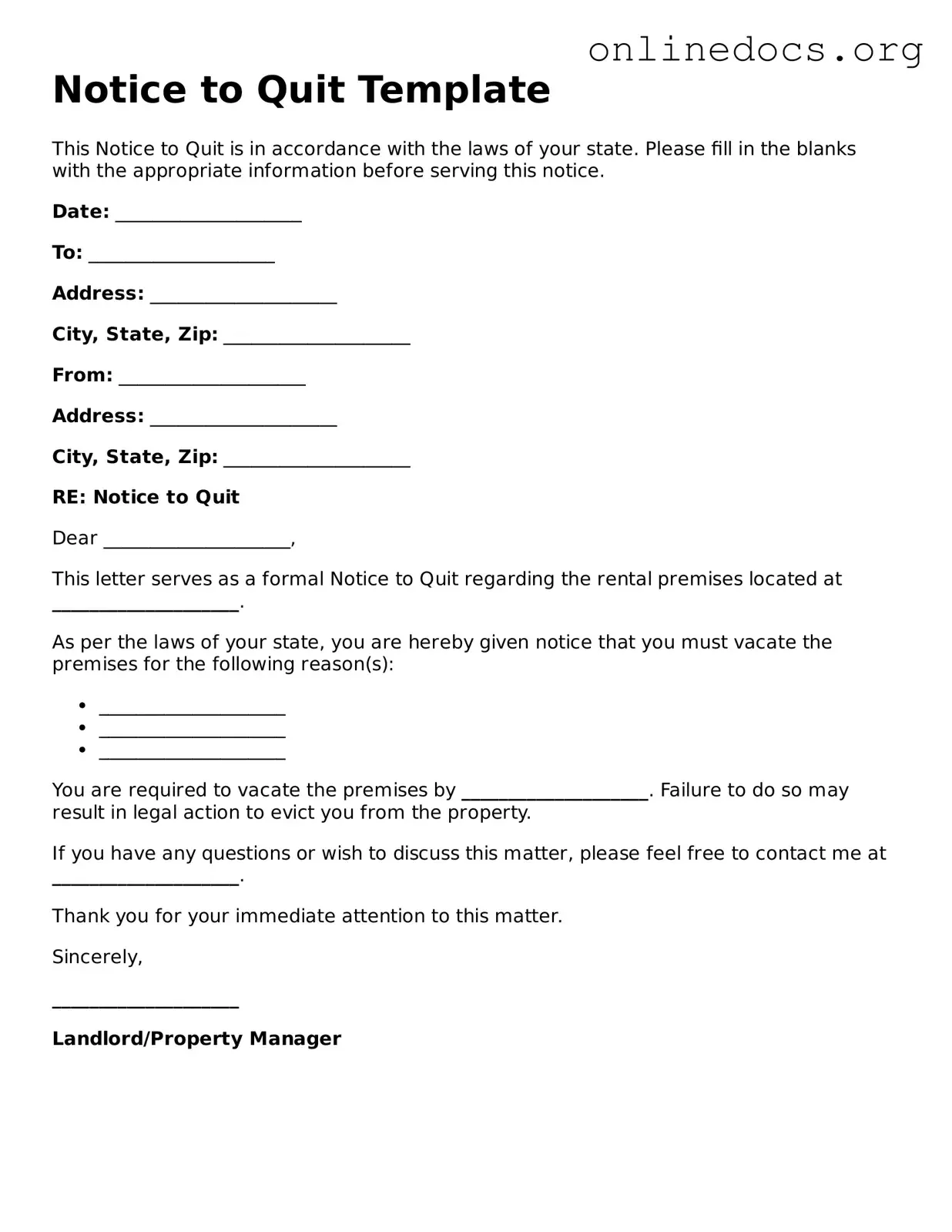The Notice of Termination is a document that serves a similar purpose to the Notice to Quit. It formally informs a tenant that their lease is ending. This document outlines the reasons for termination, whether due to lease violations or the expiration of a rental agreement. Just like the Notice to Quit, it provides a clear timeline for when the tenant must vacate the property. Both documents aim to establish a legal basis for the termination of the tenancy.
A Lease Violation Notice is another document that shares similarities with the Notice to Quit. This notice is issued when a tenant fails to comply with specific terms of the lease agreement. It details the violations and gives the tenant a chance to remedy the situation. If the tenant does not address the issues, this notice can lead to further legal action, much like a Notice to Quit can. Both documents emphasize the importance of adhering to lease terms.
The Eviction Notice is closely related to the Notice to Quit. This document is typically issued after a Notice to Quit has been ignored or after a lease violation has not been resolved. It formally begins the eviction process and informs the tenant that legal action will be taken if they do not vacate the premises. While the Notice to Quit serves as an initial warning, the Eviction Notice is a more serious step towards removing a tenant from a property.
The use of various notices and documents in the rental process is crucial to ensuring clear communication between landlords and tenants. For instance, a California Lease Agreement form outlines the essential terms of rental arrangements, and resources such as legalformspdf.com offer templates to streamline this process. By providing such documentation, both parties can avoid misunderstandings and foster a more harmonious rental experience.
The Demand for Possession is another document that functions similarly to the Notice to Quit. This notice is often used in the eviction process to demand that a tenant leave the property. It is a formal request that outlines the reasons for the demand, such as non-payment of rent or lease violations. Like the Notice to Quit, it sets a deadline for the tenant to vacate, thus creating a sense of urgency for compliance.
The Rent Demand Notice is also akin to the Notice to Quit, particularly when it involves non-payment of rent. This document notifies the tenant of overdue rent and typically includes a deadline for payment. If the tenant fails to pay, the landlord may proceed with eviction. Both notices highlight the importance of timely rent payments and provide a clear path for landlords to take action if the situation is not resolved.
The Cure or Quit Notice is similar in function to the Notice to Quit. This document is issued when a tenant violates a lease term but can remedy the situation. The notice specifies what the tenant must do to correct the violation within a certain timeframe. If the tenant fails to comply, the landlord may then pursue eviction. Both documents serve as a warning and an opportunity for the tenant to rectify their actions.
Lastly, the Notice of Non-Renewal is comparable to the Notice to Quit, particularly in the context of lease agreements that are set to expire. This notice informs the tenant that their lease will not be renewed at the end of the term. It provides a timeline for when the tenant must vacate the property, similar to the Notice to Quit. Both documents serve to communicate the end of a tenancy and the need for the tenant to prepare to leave.
